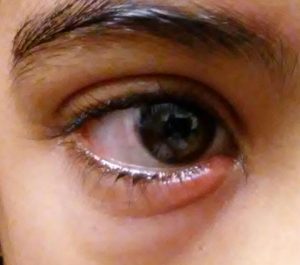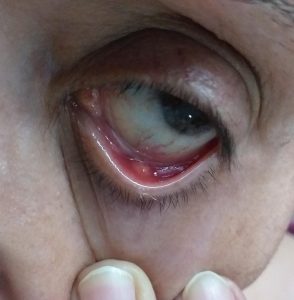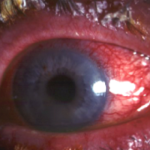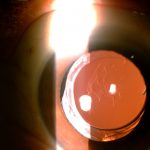Stye and Chalazion
A stye is a lump on eyelid margin formed when debris from blepharitis block the base of the eyelashes.
What is the difference between chalazion and stye?
Stye and chalazion are eyelid bumps that may occur at any age.
A chalazion is noticed as a bump on the eyelid. It is painless.
A stye is painful and mostly forms at the edge of the eyelid. There may be associated swelling of the eyelid.

Lower lid corner stye
What causes Chalazion and Styes?
- Chalazion forms when an oil gland in the eyelid becomes blocked from blepharitis (eye dandruff).
- Styes are caused by bacterial infections. Usually, the bacteria grows at the root of the eyelash.

Lump as visible from inside the eyelid
How can they be treated?
Mostly the treatment is conservative.
Hot compresses 6-8 times daily for 1 week helps most people:
- Prepare a bowl of hot water.
- Dip a clean towel in the hot water
- Squeeze the towel.
- Check it on the back of your hand before putting the towel on the eye to avoid BURNING the eyelid skin.
- Close your eyes
- Place the towel on the eyelid where the stye or chalazion is for 5 minutes. (If the towel gets cold quickly, put the towel back in hot water and follow the instructions as above).
- Repeat the process 8 times daily for at least a week.
- The doctor may recommend some antibiotic drops to use 4 times daily.
Rarely oral antibiotics are needed, particularly if there is peri-orbital cellulitis.
If the condition gets worse or does not improve after 1 week, please consult your doctor. Rarely, this would require a small surgical procedure to lancet the lesion.
What will happen if a chalazion is left untreated?
Chalazion does not spread like infections. Therefore, in some circumstances, patients may choose it to be left untreated. When not treated, the lump may appear unsightly, and if large, may cause astigmatism. An untreated chalazion may rarely disappear over time.



